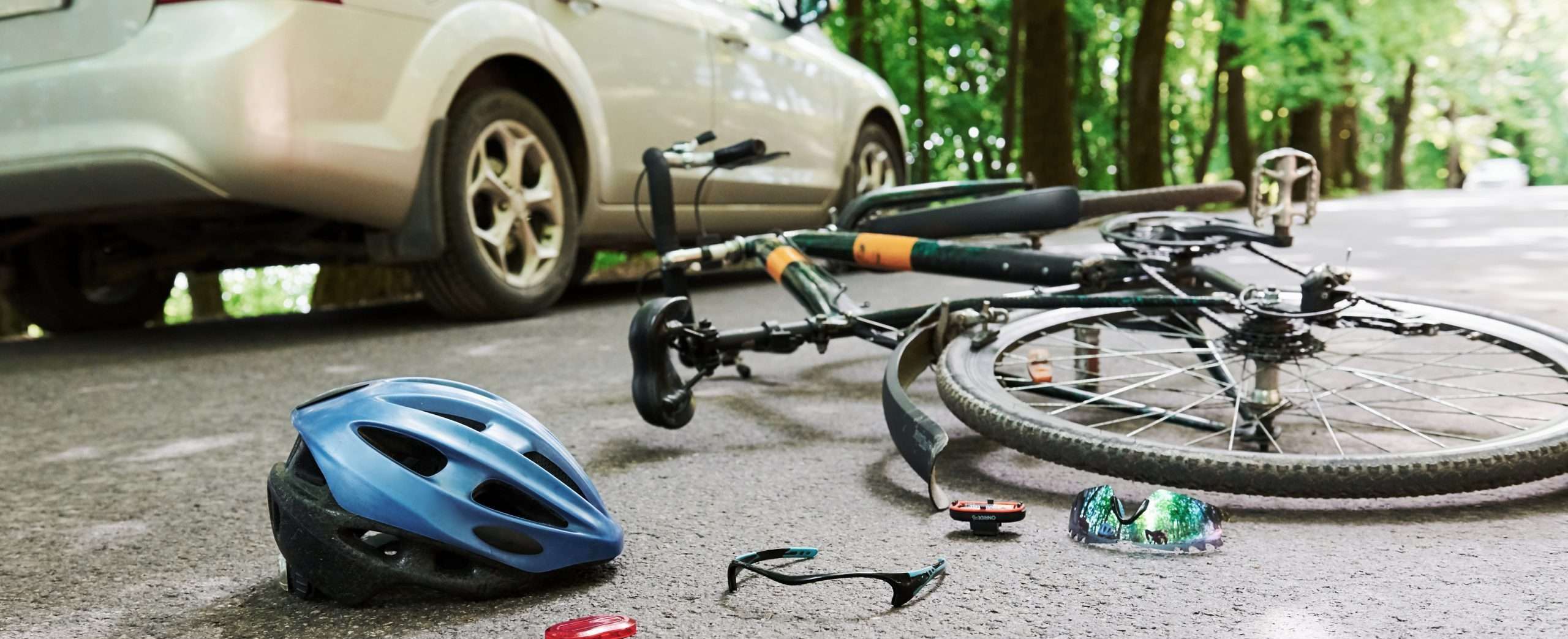RECENT POSTS
Categories
Rise in Bike and Pedestrian Accidents: Determining Liability
As we strive to create more pedestrian-friendly cities across America, the use of walking and bicycles continues to rise. A recent study shows a 47% increase in bicycle fatalities over the last decade, highlighting the significant risks that accompany this growth.
With more Americans choosing bicycles for exercise, transportation, or leisure, it is crucial to stay informed about bicycle and pedestrian accidents and the legal aspects in case of injury. The increase in accidents involving cyclists and pedestrians underscores their vulnerability and the complexities of determining liability. Understanding the causes, common injuries, and legal considerations is essential for both preventing accidents and seeking justice if one occurs.
Alarming Number of Accidents Recorded
Over the past few years, the frequency of bicycle and pedestrian incidents has risen steadily, with urban areas particularly affected. According to the National Safety Council (NSC), there were 9,188 pedestrian fatalities in 2022. This emphasizes the growing need for enhanced road safety measures and heightened awareness among all drivers and road users.
Common Injuries in Bike & Pedestrian Accidents
Accidents involving bicycles and pedestrians often result in severe injuries due to the lack of protective barriers between the individual and vehicles. Common injuries include:
Traumatic brain injuries (TBIs), concussions, and skull fractures are prevalent in bicycle and pedestrian accidents, especially among cyclists without helmets. These injuries can range from mild to life-threatening, and even seemingly minor concussions can have long-term effects on memory, concentration, and mood. Wearing a properly fitted helmet is crucial for reducing the risk and severity of head injuries.
Fractures and sprains to limbs are common injuries sustained in bicycle and pedestrian accidents. These injuries can cause significant pain and limited mobility, often requiring extensive medical treatment like casts, physical therapy, or even surgery. The healing process for orthopedic injuries can be long and arduous, and may limit a person's ability to return to work or their usual activities for weeks or even months.
Bruises, cuts, and road rash are frequent consequences of bicycle and pedestrian accidents, particularly for cyclists who may be thrown from their bikes and scraped against pavement upon impact. While these injuries may seem minor at first, they can be quite painful and take time to heal completely. Additionally, some soft tissue injuries can lead to long-term complications, such as scarring or nerve damage.
Damage to internal organs can happen due to the impact, leading to internal bleeding and other serious complications. These injuries may not be immediately apparent but can be life-threatening if not promptly treated.
Damage to the spine can result in long-term disability, including paralysis in severe cases. These injuries can have profound impacts on a person's mobility and overall quality of life.
Injuries to the face, including dental damage, broken noses, and eye injuries, can result from direct impact. These injuries can be both physically and emotionally distressing.
In the most severe cases, bike and pedestrian accidents can result in fatalities. The lack of protection leaves individuals highly vulnerable to life-threatening injuries when involved in collisions with vehicles.
Prompt medical attention is crucial even if injuries appear minor, as some symptoms may manifest or worsen over time. Whether you believe that your injuries require medical care or not, it is important to be seen promptly by a medical professional.
Common Causes of Bike & Pedestrian Accidents
While riding a bike is one of the safer modes of travel, accidents happen every day. Most bicycle and pedestrian accidents usually involve a motorized vehicle in some form. Here are some of the more common causes of such accidents:
Distracted Driving: Motorists using phones or engaging in other distractions fail to notice cyclists or pedestrians.
Failure to Yield: Drivers not giving right-of-way to cyclists or pedestrians at crossings or intersections.
Dooring: Opening a vehicle door into the path of an oncoming cyclist.
Speeding and Reckless Driving: Excessive speed and aggressive driving behavior increase the likelihood of accidents involving vulnerable road users.
Running Red Lights and Stop Signs: Drivers who ignore traffic signals and stop signs put cyclists and pedestrians at significant risk, especially at busy intersections.
Impaired Driving: Driving under the influence of alcohol or drugs significantly impairs judgment and reaction times, leading to a higher likelihood of accidents involving bicycles and pedestrians.
Poor Visibility: Accidents are more likely to happen in conditions of low visibility, such as at night, during heavy rain, or in foggy weather. Cyclists and pedestrians may be difficult to see, increasing the risk of collisions.
Inadequate Infrastructure: Lack of dedicated bike lanes, poorly marked crosswalks, and insufficient lighting can contribute to accidents by making it harder for drivers to notice and avoid cyclists and pedestrians.
Left and Right Hook: These types of collisions happen when a vehicle makes a turn and crosses the path of a cyclist going straight, resulting in a crash.
Aggressive Driving: Behaviors such as tailgating, erratic lane changes, and road rage can endanger cyclists and pedestrians, often leading to accidents.

Determining Liability in Accidents
Unlike fender benders where fault is often straightforward, determining liability in bicycle and pedestrian accidents can be a complex legal challenge. Cyclists and pedestrians lack the protection of a vehicle's metal frame, making them much more vulnerable, and even seemingly minor accidents can result in life-changing injuries. Therefore, understanding the factors that influence liability is crucial.
Traffic Laws and Right-of-Way
Traffic signals, stop signs, and crosswalks exist for a reason: to establish order and predictability on the road. When a driver disregards these rules – by failing to yield at a crosswalk, running a red light, or making an improper turn – and collides with a cyclist or pedestrian, they've established a strong case of negligence against them. However, cyclists and pedestrians also have a responsibility to follow traffic laws. For instance, a cyclist who ignores a red light and crosses against traffic could be found partially at fault, even if struck by a car.
Establishing Negligence
Establishing negligence is another critical aspect of determining liability in bicycle and pedestrian accidents. Negligence occurs when a party fails to exercise reasonable care, resulting in harm to another person. To prove negligence, four elements must be demonstrated: duty of care, breach of duty, causation, and damages. In the context of a bicycle or pedestrian accident, it must be shown that the driver, cyclist, or pedestrian had a duty to act with care, failed to do so, and directly caused the injuries or damages. Evidence such as witness statements, traffic camera footage, and expert testimonies can be vital in proving negligence. By establishing negligence, the injured party can hold the responsible party accountable and seek compensation for their losses.
Comparative vs Contributory Fault
Understanding the concepts of comparative and contributory fault is essential in determining liability in bicycle and pedestrian accidents. Different states apply different rules regarding fault:
- Comparative Fault: In states that follow comparative fault, the responsibility for the accident can be shared among the parties involved. This means that even if the injured party is partially at fault, they can still recover damages, but the compensation will be reduced by their percentage of fault. For example, if a cyclist is found to be 20% at fault for an accident, they can still recover 80% of the damages.
- Contributory Fault: In states that adhere to contributory fault, if the injured party is found to be even slightly at fault, they may be barred from recovering any damages. This strict rule can make it challenging for victims to receive compensation if they share any responsibility for the accident.
Understanding which rule applies in your state is crucial, as it can significantly affect the outcome of a liability claim. Consulting with a knowledgeable attorney can help navigate these complexities and ensure that you pursue the appropriate legal strategy.
The Importance of Medical Care
Seeking immediate medical attention after a bike or pedestrian accident is paramount. Even seemingly minor injuries can have long-term consequences if left untreated. Medical documentation not only ensures proper treatment but also serves as crucial evidence in legal proceedings, supporting claims for compensation.

Staying Safe on the Road
Promoting road safety is crucial for reducing bike and pedestrian accidents. Here are essential tips for cyclists, pedestrians, and motorists.
Tips for Cyclists
Always wear a helmet and reflective clothing: Helmets are essential for protecting your head in case of a fall or collision. Reflective clothing and accessories make you more visible, especially in low-light conditions or at night, reducing the risk of accidents.
Obey traffic signals and ride with the flow of traffic: Cyclists must follow the same traffic laws as motorists. Obeying traffic signals, stopping at stop signs, and yielding to pedestrians ensure safe interactions with other road users.
Use bike lanes when available and signal intentions clearly: Whenever possible, use designated bike lanes to separate yourself from motor vehicles. When merging or changing lanes, signal your intentions clearly using hand signals to communicate with drivers and pedestrians.
Tips for Pedestrians
Cross streets at designated crosswalks or intersections: Use crosswalks and traffic signals to safely navigate intersections and road crossings. Cross only when traffic has come to a complete stop and it is safe to do so.
Make eye contact with drivers before crossing in front of them: Establishing eye contact with drivers ensures they see you and are aware of your intention to cross. This reduces the risk of miscommunication and potential accidents.
Avoid distractions such as phones or headphones while walking: Stay alert and aware of your surroundings. Avoid using phones, listening to loud music, or engaging in activities that distract you from traffic and potential hazards on the road.
Sharing the Road with Cars
Stay alert and visible to drivers: Maintain visibility by wearing bright or reflective clothing, especially in low-light conditions. Stay alert to your surroundings and anticipate potential movements of vehicles around you.
Allow adequate space between cyclists and parked cars to avoid dooring incidents: Give parked cars a wide berth to avoid collisions if a door suddenly opens. Be cautious when passing parked vehicles, and be prepared to adjust your path if necessary.
Exercise caution at intersections and yield to pedestrians: Drivers should approach intersections with caution, obey traffic signals, and yield the right-of-way to pedestrians. Make eye contact with drivers to ensure they see you before proceeding through the intersection.
By following these tips, cyclists, pedestrians, and motorists can contribute to safer road environments and reduce the risk of accidents involving vulnerable road users. Remember, practicing caution, awareness, and respect for traffic laws are key to everyone's safety on the road.
Recovering Damages After an Accident
By following these tips, cyclists, pedestrians, and motorists can contribute to safer road environments and reduce the risk of accidents involving vulnerable road users. Remember, practicing caution, awareness, and respect for traffic laws are key to everyone's safety on the road.
Medical Expenses: One of the primary damages you can recover includes the cost of medical treatment. This encompasses emergency room visits, hospital stays, surgeries, medications, physical therapy, and any future medical care that may be necessary due to the accident.
Lost Wages: If your injuries prevent you from working, either temporarily or permanently, you may be entitled to compensation for lost wages. This includes not only the income you have already lost but also the potential future earnings if your ability to work has been compromised.
Pain and Suffering: Beyond the tangible costs, you can also seek damages for pain and suffering. This accounts for the physical pain and emotional distress caused by the accident. The amount awarded can vary greatly depending on the severity of your injuries and their impact on your daily life.
Property Damage: If your bicycle or any personal belongings were damaged in the accident, you could recover the cost of repairs or replacement. This ensures that you are not financially burdened by the loss of your property.
Rehabilitation Costs: Serious accidents often require long-term rehabilitation. You can seek compensation for any rehabilitation services, such as physical therapy, occupational therapy, or counseling, that are necessary for your recovery.
Wrongful Death: In the tragic event that a bicycle or pedestrian accident results in death, the surviving family members may pursue a wrongful death claim. This can cover funeral expenses, loss of companionship, and loss of financial support.
Frequently Asked Questions
Bike and pedestrian accidents can occur due to various reasons, often involving interactions with motor vehicles. Some of the most common causes include: distracted driving, failure to yield, dooring incidents, speeding and reckless driving, visibility issues, and inadequate infrastructure.
In a bike or pedestrian accident, liability is typically determined based on who was at fault for the incident. This can include drivers, cyclists, or pedestrians depending on the circumstances. Drivers are often considered liable if they were speeding, distracted, impaired, or failed to yield the right of way. Cyclists and pedestrians can also be held liable if they disobey traffic laws, such as running red lights or crossing streets outside of designated crosswalks. In some cases, liability may be shared among multiple parties.
Determining liability involves a thorough investigation of the accident, including witness statements, traffic camera footage, and other evidence. An experienced personal injury attorney can help navigate this process and establish fault to seek appropriate compensation.
Yes, wearing a helmet is highly recommended for cyclists of all ages and skill levels, regardless of local laws mandating helmet use. Helmets significantly reduce the risk of head injuries in the event of a collision or fall. Even at low speeds, a helmet can provide crucial protection against traumatic brain injuries, concussions, and skull fractures. Choosing a helmet that meets safety standards and ensuring it fits properly can greatly enhance safety while cycling.
It is advisable to report any bike accident involving injury, significant property damage, or disputes over fault to law enforcement. Reporting the accident helps document the incident officially, which is crucial for insurance claims and potential legal proceedings. Police reports typically include details such as the parties involved, witness statements, and the officer's assessment of the scene, providing valuable documentation to support your case.
The statute of limitations for filing a lawsuit after a bike or pedestrian accident varies by state. In most states, it ranges from one to three years from the date of the accident. It is important to consult with a personal injury attorney promptly to understand the specific deadlines applicable to your case. Failing to file within the statute of limitations may result in forfeiting the right to seek compensation for injuries and damages sustained in the accident.
Wettermark Keith: Your Personal Injury Partner
At Wettermark Keith, we have an excellent reputation as one of the most accomplished personal injury firms in the country. We offer a diverse range of practice areas, including personal injury cases, auto wrecks, trucking wrecks, nursing home abuse, medical malpractice, on-the-job injuries, social security, and VA disability, to name just a few. At Wettermark Keith, we believe in taking cases personally. Our purpose is to practice with care and compassion - to tell our clients' stories and make their voices heard. We achieve this by building strong relationships based on constant communication and an unwavering dedication to truth and trust.
Ready to work together? Contact us today for a free consultation.
HERE'S WHAT TO DO NEXT
If you or a loved one have been injured and think you might have a case, call us now for a free consultation.


